
Chesterfield County is located just south of Richmond in the Commonwealth of Virginia. The county's borders are primarily defined by the James River to the north and the Appomattox River to the south. Its county seat is Chesterfield Court House.

Bon Air is a census-designated place (CDP) in Chesterfield County, Virginia, United States. The population was 18,022 at the 2020 census. The community is considered a suburb of the independent city of Richmond in the Richmond-Petersburg region and is a part of the Southside neighborhoods. Originally developed as a resort, a central portion of Bon Air has been designated as a National Historic District with many structures of Victorian design from the late 19th and early 20th centuries. Its name means "good air," reflecting its role as a resort getaway that wealthy Richmonders enjoyed for its fresh air as opposed to the dirty air of Richmond's industrial downtown of the late 19th century.

Major Lewis Ginter was a prominent businessman, financier, military officer, real estate developer, and philanthropist centered in Richmond, Virginia. A native of New York City, Ginter accumulated a considerable fortune throughout his numerous business ventures and became one of Richmond's wealthiest citizens despite his exceptionally modest demeanor. While the Jefferson Hotel and Ginter Park embody some of Ginter's major urban contributions to Richmond, many of his philanthropic gifts were given anonymously to charitable organizations and individuals in need. Ginter played a major role in bringing Richmond back from the ravages of the Civil War. His continued devotion to the city is captured in his famous remark, "I am for Richmond, first and last."
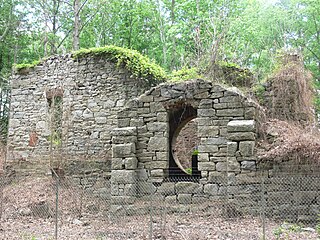
Midlothian is an unincorporated area and Census-designated place in Chesterfield County, Virginia, U.S. Settled as a coal town, Midlothian village experienced suburbanization effects and is now part of the western suburbs of Richmond, Virginia south of the James River in the Greater Richmond Region. Because of its unincorporated status, Midlothian has no formal government, and the name is used to represent the original small Village of Midlothian and a vast expanse of Chesterfield County in the northwest portion of Southside Richmond served by the Midlothian post office.

Falling Creek is a tributary of the James River located near Richmond, Virginia, United States. Approximately 23 miles (37 km) in length, it varies in width between 10 feet (3.0 m) at its source to several hundred feet in the Falling Creek Reservoir. Falling Creek rises in the Salisbury section of northwestern Chesterfield County, flows through Southside Richmond and empties into the James River roughly one mile south of the Richmond city limits. A dam located in the Meadowbrook section of the county at Hopkins Road forms the Falling Creek Reservoir, formerly used as northern Chesterfield's drinking water supply.
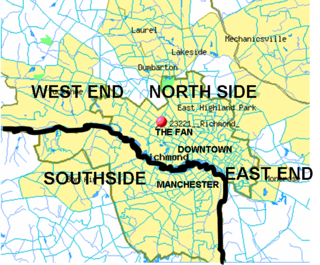
The Southside of Richmond is an area of the Metropolitan Statistical Area surrounding Richmond, Virginia. It generally includes all portions of the City of Richmond that lie south of the James River, and includes all of the former city of Manchester. Depending on context, the term "Southside of Richmond" can include some northern areas of adjacent Chesterfield County, Virginia in the Richmond-Petersburg region. With minor exceptions near Bon Air, VA, the Chippenham Parkway forms the border between Chesterfield County and the City of Richmond portions of Southside, with some news agencies using the term "South Richmond" to refer to the locations in Southside located in the city proper.

Lewis Ginter Botanical Garden is a 50 acres (200,000 m2), botanical garden in Henrico County, just outside of Richmond, Virginia. It features over a dozen themed gardens, a conservatory, library, and café. Regular daily admission is $17 for adults, $14 for seniors, $8 for children, under age 3 are free. Lewis Ginter Botanical Garden is part of the Museums for All program offering $1 adult admission and $5 annual membership to those with a SNAP/EBT card. Lewis Ginter Botanical Garden also hosts select days, typically July 4 and Labor Day, where admission is free to the community. Lewis Ginter Botanical Garden offers an indoor butterfly exhibit Butterflies LIVE!, seasonal exhibitions, art exhibitions, special events and seasonal evening hours with live music. Tours, classes and select special events typically have an additional fee.
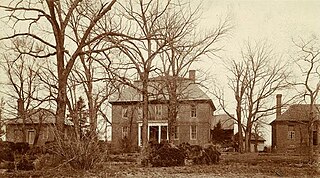
Ampthill Plantation was located in the Virginia Colony in Chesterfield County on the south bank of the James River about four miles south of the head of navigation at modern-day Richmond, Virginia. Built by Henry Cary, Jr. about 1730, it was just upstream of Falling Creek. It was later owned by Colonel Archibald Cary, who maintained a flour mill complex and iron forge at the nearby town of Warwick. Mary Randolph was born there in 1762.

Black Heath was a house and coal mine located near the present day Midlothian area of Chesterfield County, Virginia. The Black Heath coal mining enterprises were operated intermittently from the early 1780s until 1939 and were most notably run by the Heth family from 1795 until 1840, who also built the mansion house in the early 1800s. During the early tenure of the Heths' operation, the Black Heath mines were one of the largest producers of coal in the United States and supplied coal to the White House during US President Thomas Jefferson's term. In 1840, control shifted to an English group of investors who oversaw the mines at a distance until 1888, when they were sold to another interest which soon went into trusteeship. During the 1910s or 1920s, the Black Heath house collapsed due to severe undermining from the numerous coal shafts and tunnels scattered around the property. In 1938, the Black Heath land was sold to coal mining interests who soon went into trusteeship and default like many others before them. Over the next few decades, the land sat idle until 1971, when it began to be parceled off into housing developments.
Okeley Manor was an early 19th-century plantation in Fairfax County, Virginia, United States. Okeley, the residence of prominent Alexandria physician Richard Chichester Mason (1793–1869), was one of the principal Mason family estates in Northern Virginia. Mason's plantation house was used as a hospital during the American Civil War and burned to prevent the spread of smallpox.
Huguenot Springs is an unincorporated community in Powhatan County, in the U.S. state of Virginia. This community is bordered by Chesterfield county, Virginia. People live on SR 607 and on other subdivision roads.
The following is a timeline of the history of the city of Richmond, Virginia, United States

Keswick is a historic plantation house near Powhatan, in Chesterfield County and Powhatan County, Virginia, USA. It was built in the early-19th century, and is an "H"-shaped, two-story, gable-roofed, frame-with-weatherboard building. It is supported on brick foundations and has a brick exterior end chimney on each gable. Also on the property are a contributing well house, a smokehouse, the circular "slave quarters," a kitchen, a two-story brick house, a shed, and a laundry.
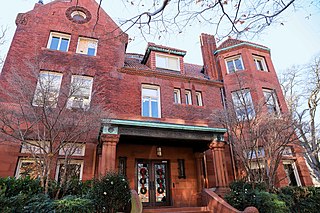
Ginter House is the historic 1892 former residence of Lewis Ginter. It is owned by Virginia Commonwealth University (VCU) and is home to the provost's office. It was used as Richmond's first public library from 1925 until 1930, was used as part of a school, and was the main administrative building on the Monroe Park, Virginia campus of VCU for more than 40 years. In September 2020, the University’s Board of Visitors voted to de-commemorate several buildings on campus named for members of the Confederacy including the Lewis Ginter house. The house is now simply known as the "VCU Administration Building".

The Bloemendaal House, originally the Lakeside Wheel Club, is a clubhouse in Richmond, Virginia originally built by Lewis Ginter in 1895.
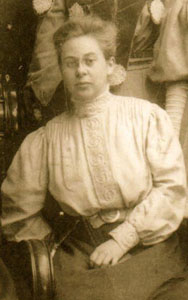
Grace Evelyn Arents was an heiress, Christian activist and philanthropist in Richmond, Virginia. She inherited $20 million from her uncle Lewis Ginter, a tobacco business magnate and philanthropist, and she used the money to transform Richmond for the better.
Thomas Mann Randolph Sr. served in the Virginia House of Burgesses, the Revolutionary conventions of 1775 and 1776, and the Virginia state legislature. Married twice, he fathered 15 children. One marriage was to a cousin, Anne Cary, with whom they had 13 children. His second marriage, which resulted in two children, caused a dissention among family members. The youngest son, with the same name as his half-brother, Thomas Mann Randolph, inherited the family plantation, Tuckahoe plantation. Randolph expanded upon the house that began to be built during his parents' short marriage. Orphaned as a young boy, Randolph continued work on Tuckahoe when he came of age. He also purchased Salisbury house, which was used during his lifetime as a hunting lodge.
Abraham Salle was a French Huguenot who emigrated to Colonial Virginia. He was the progenitor of the Salle family in the United States. He was a successful merchant and served in the militia and was a justice of Henrico County, Virginia.














